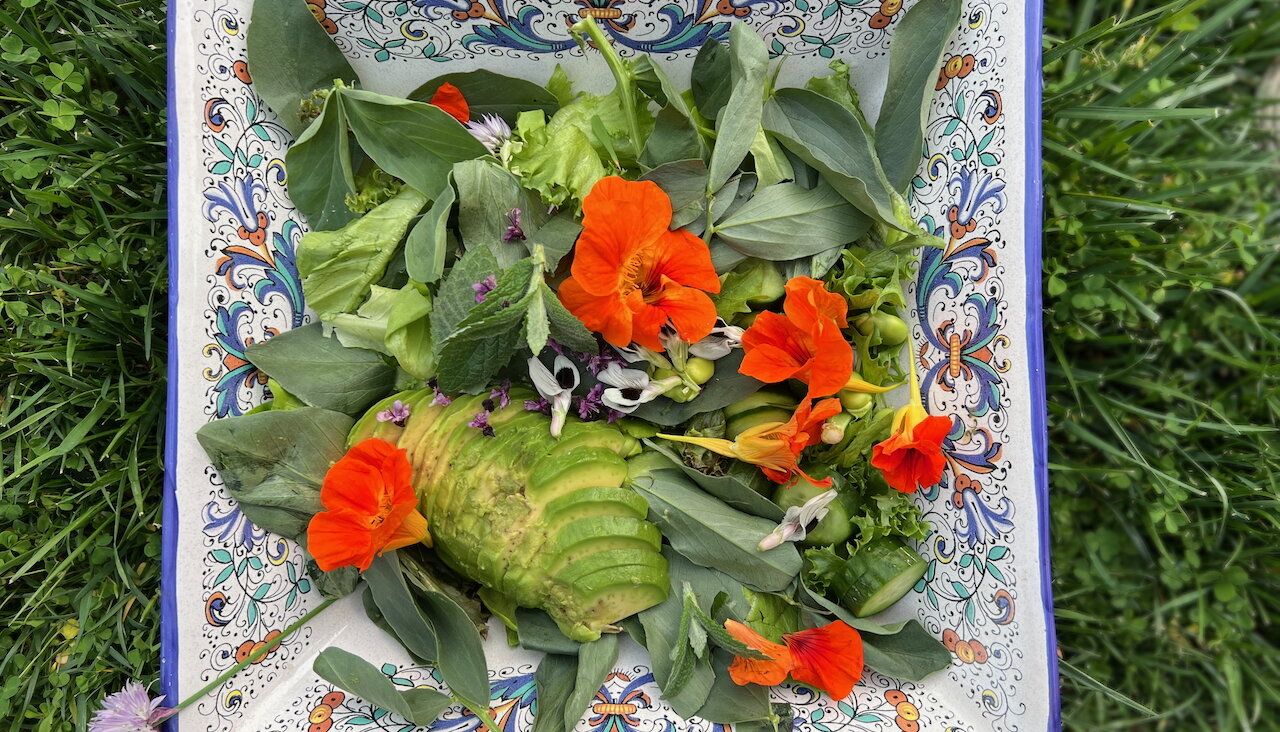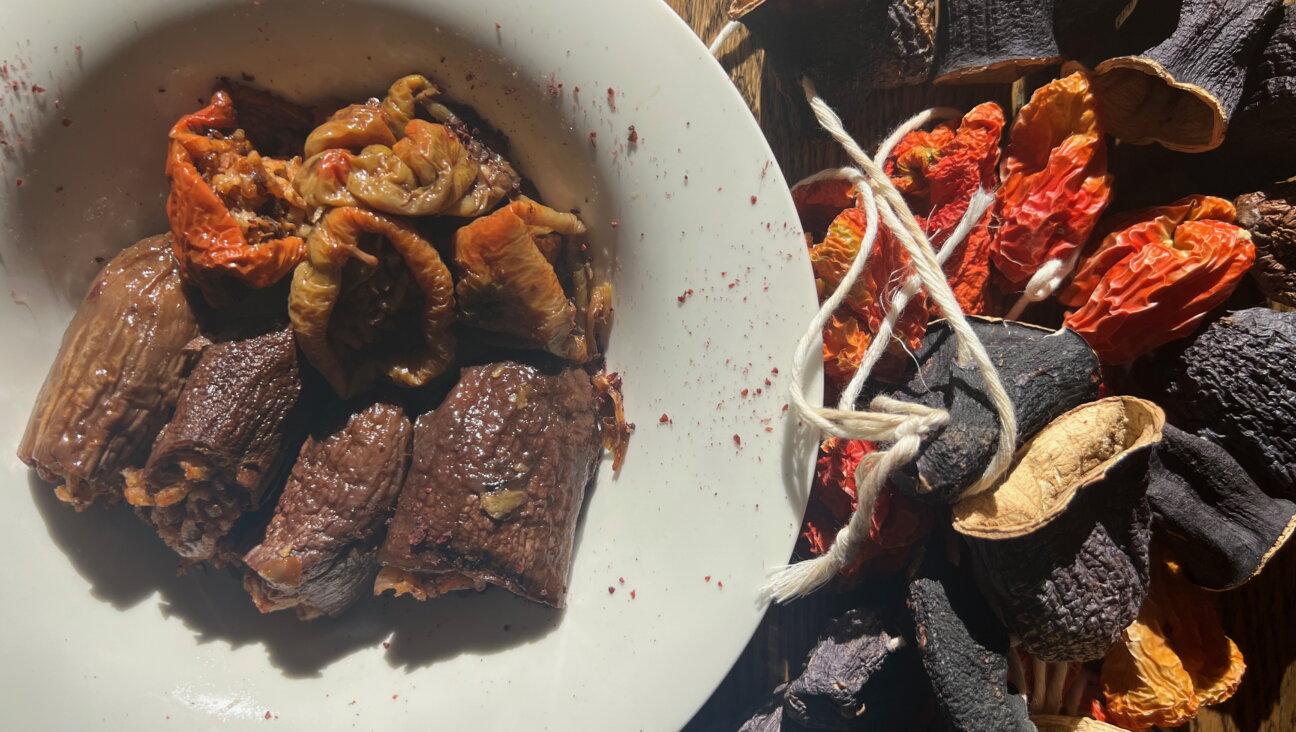Cooking Shabbos Dinner After the Clocks Fall Back, Part Two

That first Friday after the clocks fall back can be a serious shock to the system. An entire hour of daylight: gone. It’s a bold move. What happens next is more insidious. Over the next month or so, the light will continue to slip away, but quietly, dwindling by mere seconds each day. Those seconds add up; each Friday, we’ll be out a handful of minutes that, just the week before, we didn’t think we could do without. In other words, squeezing in all of our cooking before Shabbat is only going to get harder. Cooking most of the meal beforehand will take us only so far. To get us the rest of the way there, we’ll need a second strategy, one that can be summed up in three little words: mise en place.
Mise en place, literally “putting in place,” refers to the advance measuring, chopping, pouring, and arranging of ingredients for the dishes you’re planning to prepare. Chef Anthony Bourdain has gone so far as to call mise en place “the religion of all good line cooks.” I’ve never cooked on the line, but even at home, it’s easy to understand what he means. When I’m sailing swiftly through a recipe, neck and neck with the sinking sun, I stand proudly among the converted.
Consider the chicken. It’s a classic main course for the Friday night table but, unless you’re into dry and stringy, it’s not the kind of meat you want to make ahead and reheat. Enter mise en place. The encroaching darkness is no match for a lemon za’atar chicken when you do your trimming and seasoning the night before – a good habit to pick up, anyway, if a tender, juicy bird is what you’re after – and “mise” the remaining components the morning of. Then, on Friday afternoon, simply brown the chicken, and tuck it into a baking dish with your pre-measured apricots, prunes, and olives, pre-peeled garlic cloves, pre-sliced lemons, and pre-cut onion wedges. Cover, and bake for about 45 minutes. The prunes will slump and shrivel; the apricots will blacken in places and caramelize around the edges. Meanwhile, za’atar, cumin, and turmeric tug the sweet in this dish over toward savory. It’s a winning combination.
Couscous is a natural choice for these very short Fridays since, to prepare it, all you need is a small pot of boiling water or stock, and a few measly minutes. With a little help from mise en place, those minutes are even measly-er. This particular couscous serves as the backdrop for the layered flavors of the chicken, so I keep the add-ins simple: chopped parsley, toasted pine nuts and, if I’m feeling industrious, a few swipes of lemon zest. I do the chopping, toasting, and swiping first thing Friday morning, when I’m preparing the mise en place for the chicken. Then, while the chicken cooks later that day, I boil the water, dump in the pre-measured couscous, turn off the flame and, five minutes later, transfer the couscous to a bowl. Thanks to my early-morning stint as my own sous chef, the remaining ingredients are ready and waiting in their tiny Tupperware containers. One by one, I tip them into the bowl.
Note: For a complete Shabbat dinner menu, pair these recipes with the carrot-fennel and citrus-olive oil cake from last week’s post. I test drove this exact menu with an eye on the clock a few weeks back, and I spent a grand total of 1 hour and 35 minutes in the kitchen on Thursday night, 15 minutes in the kitchen on Friday morning, and 25 minutes (of active time; the chicken will continue to cook for an additional 20 minutes) in the kitchen on Friday afternoon. While the chicken was cooking, I also prepared a simple green salad to round out the meal. That adds up to 2 hours and 15 minutes of active time in the kitchen. Not bad at all.
Lemon Za’atar Chicken Serves 4
For the spice rub:
2 Tablespoon za’atar
1 Teaspoon cumin
1 Teaspoon turmeric
2-3 grinds sea salt and black pepper
1 Tablespoon olive oil
4 chicken leg quarters (leg plus thigh)
½ heaping cup each of olives (I prefer to use the ones with the pits; just warn your guests!), prunes, and dried apricots
6 whole cloves of garlic, peeled
2 medium yellow onions
1 lemon
On Thursday evening, prepare the chicken for its overnight in the fridge:
1) Measure the za’atar, turmeric, cumin, salt, and pepper into a small bowl, and mix. Add the olive oil, and stir to form a paste. Trim any excess fat from the chicken, rinse well, and pat dry. Rub the chicken with the za’atar paste, arrange the pieces in a baking dish, cover with plastic, and refrigerate until Friday afternoon.
First thing on Friday morning, prepare the rest of the ingredients:
2) Measure the olives, prunes, and apricots into separate bowls, and cover. Store the olives in the fridge. Peel 6 cloves of garlic, quarter 2 medium yellow onions and 1 lemon, and store in separate airtight containers in the fridge.
On Friday afternoon, preheat the oven to 375 degrees, and remove the dish of spiced and seasoned chicken from the fridge.
3) Heat 2 tablespoons of olive oil over medium-low heat in a heavy pan large enough to fit all of the chicken pieces in a single layer. Place the chicken pieces, skin side down, into the pan and let them cook for about 8-10 minutes, until the skin is a light rosy brown. If the oil pops or cracks against the chicken, lower the heat; you should hear only a persistent sizzle. Turn the chicken legs over and cook for an additional 5 minutes. Return the browned chicken to the baking dish, and arrange the pieces in a single layer.
4) Tuck the prepared onion quarters, garlic cloves, olives, prunes, and apricots around the chicken. Squeeze a lemon quarter on each of the chicken legs, and toss the squeezed-out slices into the dish. Cover tightly with aluminum foil, and bake for 45 minutes.
Parsley and Pine nut Couscous
Serves 4-6
1 cup of couscous (I prefer whole wheat)
2 Tablespoons pine nuts
A small handful of parsley, enough for 2 Tablespoons, chopped
1 Teaspoon olive oil
A few swipes of lemon zest (optional)
Salt and pepper, to taste
1 ½ cups of water
On Thursday night or Friday morning, prepare your mise en place:
1) Measure the cup of couscous into a bowl and cover. Toast the tablespoons of pine nuts over medium heat in a small, nonstick pan until the fragrance rises and they turn light brown. Pine nuts burn easily, so push or shake them around the pan every so often, and watch them carefully. Once they have cooled, store the toasted pine nuts in an airtight container at room temperature.
2) Wash, thoroughly dry, and chop the parsley. Store the chopped parsley in a sealed airtight container in the fridge.
3) On Friday afternoon, heat the water in a small saucepan. When the water in the saucepan boils, dump in the couscous, stir, cover, and turn off the heat. Wait five minutes.
4) Uncover the couscous, fluff with a fork, drizzle with the olive oil, and cover once again. Stir in the toasted pine nuts, chopped parsley, lemon zest (if using), and salt and pepper just before serving.
Jessica Fechtor writes the food-inspired blog, Sweet Amandine and is a PhD candidate in Yiddish literature at Harvard University.
The Forward is free to read, but it isn’t free to produce

I hope you appreciated this article. Before you go, I’d like to ask you to please support the Forward.
Now more than ever, American Jews need independent news they can trust, with reporting driven by truth, not ideology. We serve you, not any ideological agenda.
At a time when other newsrooms are closing or cutting back, the Forward has removed its paywall and invested additional resources to report on the ground from Israel and around the U.S. on the impact of the war, rising antisemitism and polarized discourse.
This is a great time to support independent Jewish journalism you rely on. Make a gift today!
— Rachel Fishman Feddersen, Publisher and CEO
Support our mission to tell the Jewish story fully and fairly.
Most Popular
- 1

Fast Forward Ye debuts ‘Heil Hitler’ music video that includes a sample of a Hitler speech
- 2

Opinion It looks like Israel totally underestimated Trump
- 3

Culture Cardinals are Catholic, not Jewish — so why do they all wear yarmulkes?
- 4

Fast Forward Student suspended for ‘F— the Jews’ video defends himself on antisemitic podcast
In Case You Missed It
-

Culture How one Jewish woman fought the Nazis — and helped found a new Italian republic
-

Opinion It looks like Israel totally underestimated Trump
-

Fast Forward Betar ‘almost exclusively triggered’ former student’s detention, judge says
-

Fast Forward ‘Honey, he’s had enough of you’: Trump’s Middle East moves increasingly appear to sideline Israel
-
Shop the Forward Store
100% of profits support our journalism
Republish This Story
Please read before republishing
We’re happy to make this story available to republish for free, unless it originated with JTA, Haaretz or another publication (as indicated on the article) and as long as you follow our guidelines.
You must comply with the following:
- Credit the Forward
- Retain our pixel
- Preserve our canonical link in Google search
- Add a noindex tag in Google search
See our full guidelines for more information, and this guide for detail about canonical URLs.
To republish, copy the HTML by clicking on the yellow button to the right; it includes our tracking pixel, all paragraph styles and hyperlinks, the author byline and credit to the Forward. It does not include images; to avoid copyright violations, you must add them manually, following our guidelines. Please email us at [email protected], subject line “republish,” with any questions or to let us know what stories you’re picking up.















